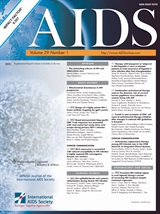
OBJECTIVES:
To assess the association between male circumcision, insertive anal sex practices, and HIV acquisition in a cohort of MSM.
METHODS:
Data were from 1824 HSV-2-seropositive, HIV-seronegative MSM, 1362 (75%) from Peru and 462 (25%) from the US, who participated in a randomized placebo-controlled trial of HSV-2 suppression for HIV prevention (HPTN 039). Circumcision status was determined by examination at enrollment. HIV testing was done every 3 months for up to 18 months. Partner-specific sexual behavior for up to the last three partners during the previous 3 months was analyzed.
RESULTS:
There was no significant association between male circumcision and HIV acquisition in univariate analysis [relative risk (RR) = 0.84, 95% confidence interval (CI) 0.50-1.42]. In a prespecified multivariate analysis that assumed a linear relationship between the proportion of insertive acts and effect of circumcision on HIV acquisition, the interaction between circumcision and proportion of insertive acts was not significant (P = 0.11). In an exploratory analysis that categorized behavior with recent partners by proportion of insertive acts (<60 or ≥60% insertive acts), circumcision was associated with a nonstatistically significant 69% reduction in the risk of HIV acquisition (RR = 0.31, 95% CI 0.06-1.51) among men who reported at least 60% of insertive acts with recent male partners.
CONCLUSION:
Circumcision does not have a significant protective effect against HIV acquisition among MSM from Peru and US, although there may be reduced risk for men who are primarily insertive with their male partners. This association needs to be investigated across diverse cohorts of MSM
Autor(es):SÁNCHEZ, J., SAL Y ROSAS V. G., HUGHES, J. P., BAETEN, J. M., FUCHS, J., BUCHBINDER, S. P., KOBLIN, B. A., CASAPIA, M., ORTIZ, A., CELUM, C.
Año: 2011
Título de la revista: AIDS
Ciudad: USA
Volumen: 25
Número: 4
Página inicial - Página final: 519–523
ISSN: 0269-9370
Url: http://journals.lww.com/aidsonline/Fulltext/2011/02200/Male_circumcision_and_risk_of_HIV_acquisition.14.aspx
